659
Startup 1917 – the way Matsushita: from $ 50 to global corporations
The hero of this publication has become an icon of modern business, a legend in the world of audio equipment and other electrical equipment. His work on management is a reference book for many leaders, as in his native Japan, and around the world. Konosuke Matsushita and his company have come a long and hard way from handicraft workshop to a global giant.
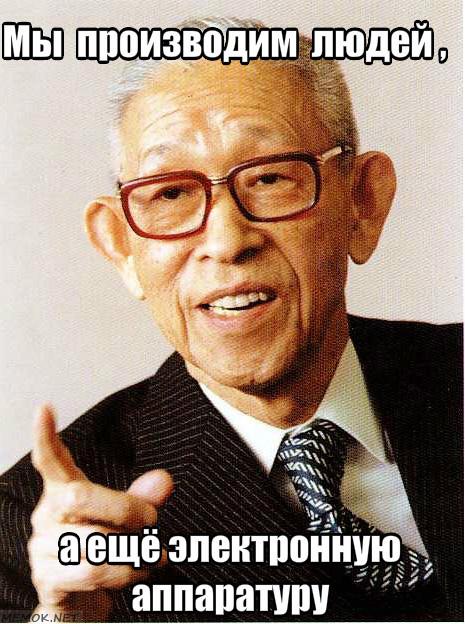
For us, the 1917 is almost always associated with the October and February revolutions, serious upheavals in the life of the country. Not many people know that until the Bolsheviks overthrew the provisional government in Japan, an unknown but ambitious entrepreneur, Konosuke Matsushita laid the basis of an entirely different revolutions. Revolutions in technology, business, marketing. He was one of those people, whose success to this day inspires technical startups. Thanks to this man the world knew about brands such as Matsushita Electric, National,Technics,Panasonic.
In this material the story of his life, his principles, and about how faith in people, creativity, strong beliefs win any circumstances and allow you to go from home-made plugs before the mass production of smartphones.
It Matsushita became one of the first businessmen who formulated the principles of corporate social responsibility and public-private partnerships.
More than just the company Konosuke succeeded in mass production of audio and video equipment, radios, televisions. It was one of the authors and supporters of the idea of the widespread distribution of accessible electronic equipment. Today, Panasonic Corporation is one of the world's largest manufacturers of consumer electronics, ranging from audio systems, media centers, smartphones and headphones, ending microwave ovens, televisions and vacuum cleaners.
The beginning: difficult childhood, plugs, boards, fans and adapters
Matsushita started working very early, at 9 years old. The family needed the money since his father went bankrupt as a result of careless speculations. His enthusiasm for modern technology probably began in 1910, the year when 18 year old, Konosuke got a job in the company Osaka Light. This company was engaged in the supply of the city, and in 1909-the year started in Osaka first electric tram.

While working at Osaka Light Matsushita offered his first innovation, an improved electrical plug, which he gave free time. The then future employers billionaire reacted coolly to the invention, considering that the new plug will not be able to bring profits.

A young Japanese man believed in the success of their innovations, like a modern startups quit his job, opening a tiny cottage industry. The idea was promising, especially considering the time in which it appeared. In an interview with Matsushita repeatedly said that the idea of creating your own business appeared not without influence of his father, which was developed in a talented son entrepreneurial flair. The implementation of the project at Matsushita was only 100 yen ($ 50).

Matsushita Electric was created as artisanal family business, which employs Konosuke himself, his wife and brother-in-law, Toshio IUE (in future the President of the company Sanyo), a few later came the opportunity to hire two more workers. By the end of the first year of existence, the company was on the verge of financial collapse. Most likely, she would disappear, but suddenly the businessman received a large order from Kawakita Electric for the manufacture of insulation boards for 1000 fans. It was then in 1918, breaking into an already occupied market segment, Matsushita has formulated a brand new formula of successful production, known as law 30%
"To intrude on an already established market, all you need to do 30% better and 30% cheaper"
Thanks a good deal with Kawakita Electric, Matsushita received the following, a more beneficial order, was able to rent two-storey house and to continue the production of plugs. After a short time, Konosuke drew attention to the fact that in Japan there is a growing demand for dual-cartridges for incandescent lamps. The company has developed new type products, which quickly gained popularity with consumers, providing stable growth and development.
The birth of a National, from bike lights to table lamps
From 1923, the year of Konosuke launches another, popular at the time. The company began production of Bicycle lamps (headlights running on battery). Existed at the time the rechargeable lamp differed very short time, not more than 3 hours. Four months, Konosuke experimented with electrolytes, which allowed him to create a battery that ensures operating time of lamps up to 40 hours.

Creating a product that is superior to almost all existing analogues, Matsushita almost went bankrupt. The fact is that buyers, seeing the promise of a 40-hour work, just not in a hurry to believe it, and the shower for a long time remained unclaimed. Then, Matsushita has offered its trading counterparties to take the goods on sale and pay the money for it after the fact. Time and a new marketing principle has done its job and led lights have become popular, overcoming the resistance of the rigidity of the consumers.
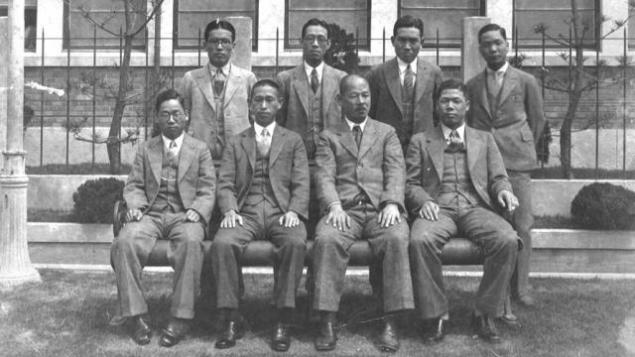
Moving on to the next stage of development, the company began production of electric table lamps that are gradually replacing the traditional Japanese kerosene. To promote this product you receive the first brand of the company "National".
1929 – the year of birth of the social role of business
In 1929, after the collapse of the new York stock exchange, the company Konosuke Matsushita was on the verge of extinction. Despite the impact of the great depression on the Japanese economy, Konosuke never followed the beaten path of mass crisis of layoffs. Contrary to the expectations of partners and of competitors, the head of Mutsuhito Electric gathered employees and told them the following:
“We will not fire anyone! We will not cut wages! Now everyone should understand that we are one, and business is not the most important! Each of you should make every effort to make our products a success in the market”
Anti-crisis strategy of the businessman is based on maximum reduction of production costs (no impact on wages) and limit of employee engagement in the preservation of the company. Partly the policy of Konosuke justified. Within a few months of crisis the company's sales remained stable. However, a General decline in demand could not affect the statistics. 1 December 1929, the year of the sale of Matsushita Electric fell to the psychological $ 50 level, which required urgent action. Representatives of the management of the company was close to a decision on the reduction of half the staff, but Matsushita categorically objected:
“Reducing production by half immediately, right from today, but no one fired. We will reduce the production not at the expense of layoffs of workers, and provide them with a shortened work week. For their work they will receive the same salary. However, all holidays will be cancelled. We refer to workers with a request to administer the sale of inventory in the warehouses,”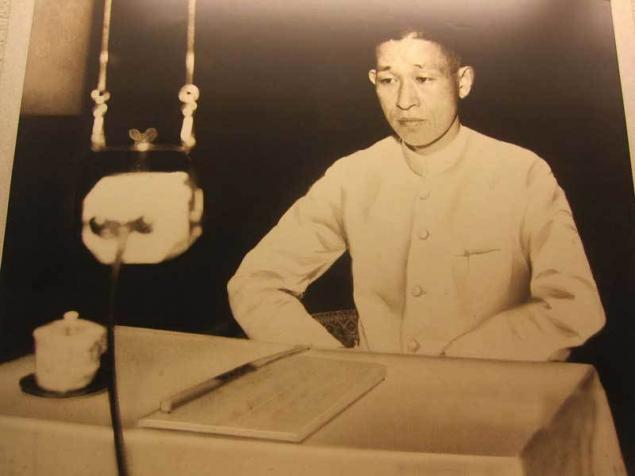
The original decision Matsushita has shocked the rest of the leaders of the company, while
incredibly raised his authority among the workers and employees. Each employee is paid 2 hours per day the distribution of products that led to an almost instant liquidation warehouse surplus Matsushita Electric. Konosuke, Matsushita was the only head of the Japanese companies which did not cut a single employee in 1929, the year. Moreover, in this period was strengthened by the diversification of products and started production of radios and audio equipment.
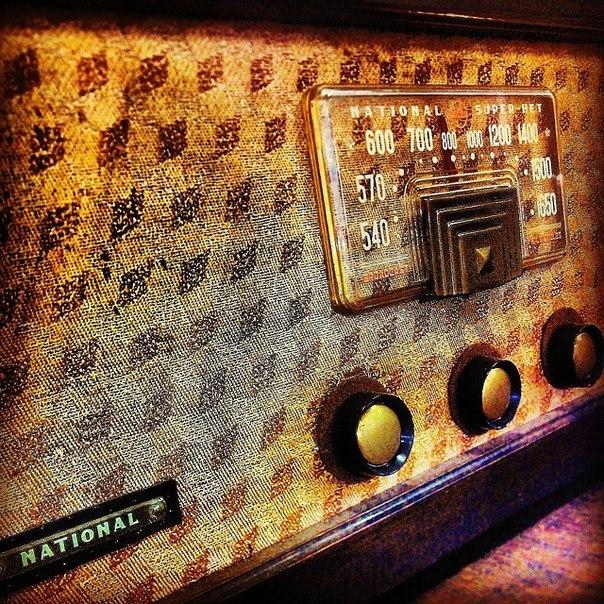
In 1932, analyzing the success of its anti-crisis policy, Konosuke Matsushita formulated one of the first paradigms of social business responsibility, which is reduced to the principle:
"Business is people"Matsushita defines the company mission as follows:
"Our business is something entrusted to us by society. Therefore, we must guide and develop the company to help develop society and improve people's lives"Traditional values as the basis of success

Well aware of traditional values of Japanese society, Konosuke originally created the company as a big family, and sincerely believed in their employees. In addition, he is actively pursuing the ideology of the unity of business, society and the state, which is very close to the most Japanese of his generation. Creating the corporate principles for the company's employees, Konosuke closely links the notion of personal prosperity, prosperity and prosperity of the nation. This approach gave excellent results, and the company began to steadily grow and develop until the beginning of the second world war.

Konosuke not stop with the creation of special principles of corporate ethics, believing in enhancing the performance of the company due to personal growth of its employees, he founded the "Institute for training workers." The school opened its doors in 1934 year, the production of Kadoma. Matsushita realized the value of education, as he himself, in the circumstances, was not able to get it.

In one interview, the question about what his company, Konosuke said:
"we produce people, and even electronic devices"In 1963, the year in public television interview with Prime Minister of Japan Hayato Ikeda and Matsushita, as an adherent of traditional values defended religious education, claiming that it along with other traditions, it is vital for the national future of Japan.
The biggest shock
The military confrontation between Japan and China, grew into the theater of hostilities of the second world war, was the most difficult period for the company, Konosuke, however, as for the whole of Japan.

With the beginning of the war, under pressure from the political elite of Japan, the company starts to work on the military-industrial complex of the country. The principle of unity of the employees of the company and the state cost of Konosuke expensive, during the bombing, the company lost 32 industrial complex, and also large offices in Tokyo and Osaka. From deprivation of rights and the liquidation of the company, during the American occupation, "Sensei Japanese management" was able to save only mass demonstrations loyal to the head of the workers.

The post-war years, in war-ravaged Japan also does not Bode well. The company's main product was the battery, lamps and radios were not widely in demand rapidly impoverished population. Despite the hardships of postwar life, the loyalty of your employees and surviving after the bombing of the production base gave the company to die. After recovering from the "war syndrome" company Matsushita Electric continued the development of the pre-war rate.

Victorious leap to the West
In 1951, Matsushita stated that the capacity, resources and quality products allow Matsushita Electric to take its rightful place in the global economic community. To assess the level of American industrial enterprises, Konosuke paid a visit to the US, and was disappointed huge technological and industrial backwardness of Japan. To overcome this gap, his company needed a deeper knowledge in electronics, changing approaches to production.

In the mid-50s, Konosuke initiates a mutually beneficial partnership with Matsushita Electric company Philips.So there is a joint venture that manages the early 60-ies to stay ahead in the technological development of almost all American companies. Equipment issued by the unit, it has a new name, so comes the Panasonic brand (National Panasonic).

Battle and victory
The company is under the management of Konosuke defeated in three major battles in its history. Battle for audio were won on the national market back in the ' 60s, when with Philips began the production of radios, tape recorders and players under the brand National Panasonic. The key to success were the development, which began in 1957.

At the same time in Western markets, within 2 decades, the Corporation overcame the market "the three treasures" (washing machines, refrigerators and televisions), and later the fourth – vacuum cleaners. And finally the battle for video (late 70's) with a permanent competitor, SONY. To beat the opponent managed by combining efforts with the JVC and based on their new VHS format.
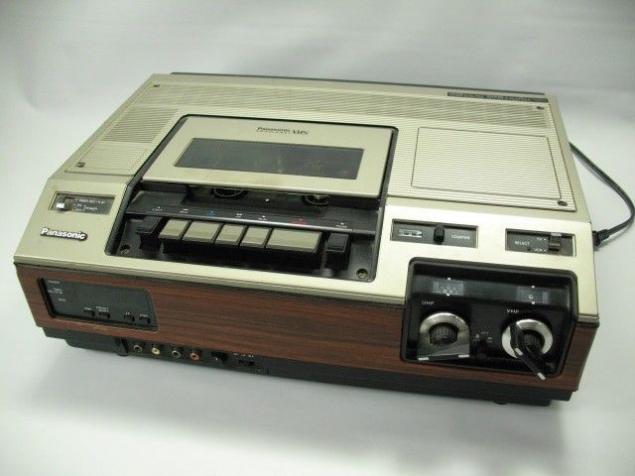
As a wise leader, Konosuke understand that age and health might not allow him to continue to run the company. In 1961 year, while in the Zenith of his fame, he made a speech in which tells about the success of the company and, finishing it, reports that retiring.

Rest on one's laurels will not last long, to the middle of the 60s the economic situation of Japan worsened, and the company appealed to the founder asking to go back. Konosuke, again headed by Matsushita Electric, and remained in the post of Director until 1973. The great leader remained in a modest post of the consultant, periodically returning to the leadership in difficult times. Corporate ideology established by the founder, continues to help the company today. Only in 2000-m to year, eleven years after the death of Matsushita, under pressure from the difficult situation on the market, presidentships Kunio Nakamura decided to deviate from the principle of lifetime employment and reduced 5% of the company's employees.
Philosophy and principles
Their philosophical and ideological perspectives on business Konosuke outlined in numerous books, becoming one of the most widely read Japanese authors in the world.

In his writings he formulated 7 major, in his opinion, principles of management:
Contribution to society Fairness and honesty Cooperation and team spirit Attitude on continuous improvement, Courtesy and humility is the Identification of self with a firm Sense of gratitude to the company Not less important Matsushita believed the other 7 principles guaranteed to ensure the success of the company:
The consumer above all profit – at the expense of the service, Each governs himself In control of the company involves all coexistence as a guarantee of shared prosperity Fair competition in the market People are more important than products
The outcome
Matsushita died in 1989, not by the perhaps the only one of its goals: before the age of the third Millennium is only 11 years old. The corporate legacy of the founder of the Panasonic Corporation has enjoyed until now.
Source: geektimes.ru/company/pult/blog/283270/

For us, the 1917 is almost always associated with the October and February revolutions, serious upheavals in the life of the country. Not many people know that until the Bolsheviks overthrew the provisional government in Japan, an unknown but ambitious entrepreneur, Konosuke Matsushita laid the basis of an entirely different revolutions. Revolutions in technology, business, marketing. He was one of those people, whose success to this day inspires technical startups. Thanks to this man the world knew about brands such as Matsushita Electric, National,Technics,Panasonic.
In this material the story of his life, his principles, and about how faith in people, creativity, strong beliefs win any circumstances and allow you to go from home-made plugs before the mass production of smartphones.
It Matsushita became one of the first businessmen who formulated the principles of corporate social responsibility and public-private partnerships.
More than just the company Konosuke succeeded in mass production of audio and video equipment, radios, televisions. It was one of the authors and supporters of the idea of the widespread distribution of accessible electronic equipment. Today, Panasonic Corporation is one of the world's largest manufacturers of consumer electronics, ranging from audio systems, media centers, smartphones and headphones, ending microwave ovens, televisions and vacuum cleaners.
The beginning: difficult childhood, plugs, boards, fans and adapters
Matsushita started working very early, at 9 years old. The family needed the money since his father went bankrupt as a result of careless speculations. His enthusiasm for modern technology probably began in 1910, the year when 18 year old, Konosuke got a job in the company Osaka Light. This company was engaged in the supply of the city, and in 1909-the year started in Osaka first electric tram.

While working at Osaka Light Matsushita offered his first innovation, an improved electrical plug, which he gave free time. The then future employers billionaire reacted coolly to the invention, considering that the new plug will not be able to bring profits.

A young Japanese man believed in the success of their innovations, like a modern startups quit his job, opening a tiny cottage industry. The idea was promising, especially considering the time in which it appeared. In an interview with Matsushita repeatedly said that the idea of creating your own business appeared not without influence of his father, which was developed in a talented son entrepreneurial flair. The implementation of the project at Matsushita was only 100 yen ($ 50).

Matsushita Electric was created as artisanal family business, which employs Konosuke himself, his wife and brother-in-law, Toshio IUE (in future the President of the company Sanyo), a few later came the opportunity to hire two more workers. By the end of the first year of existence, the company was on the verge of financial collapse. Most likely, she would disappear, but suddenly the businessman received a large order from Kawakita Electric for the manufacture of insulation boards for 1000 fans. It was then in 1918, breaking into an already occupied market segment, Matsushita has formulated a brand new formula of successful production, known as law 30%
"To intrude on an already established market, all you need to do 30% better and 30% cheaper"

Thanks a good deal with Kawakita Electric, Matsushita received the following, a more beneficial order, was able to rent two-storey house and to continue the production of plugs. After a short time, Konosuke drew attention to the fact that in Japan there is a growing demand for dual-cartridges for incandescent lamps. The company has developed new type products, which quickly gained popularity with consumers, providing stable growth and development.
The birth of a National, from bike lights to table lamps
From 1923, the year of Konosuke launches another, popular at the time. The company began production of Bicycle lamps (headlights running on battery). Existed at the time the rechargeable lamp differed very short time, not more than 3 hours. Four months, Konosuke experimented with electrolytes, which allowed him to create a battery that ensures operating time of lamps up to 40 hours.

Creating a product that is superior to almost all existing analogues, Matsushita almost went bankrupt. The fact is that buyers, seeing the promise of a 40-hour work, just not in a hurry to believe it, and the shower for a long time remained unclaimed. Then, Matsushita has offered its trading counterparties to take the goods on sale and pay the money for it after the fact. Time and a new marketing principle has done its job and led lights have become popular, overcoming the resistance of the rigidity of the consumers.

Moving on to the next stage of development, the company began production of electric table lamps that are gradually replacing the traditional Japanese kerosene. To promote this product you receive the first brand of the company "National".
1929 – the year of birth of the social role of business
In 1929, after the collapse of the new York stock exchange, the company Konosuke Matsushita was on the verge of extinction. Despite the impact of the great depression on the Japanese economy, Konosuke never followed the beaten path of mass crisis of layoffs. Contrary to the expectations of partners and of competitors, the head of Mutsuhito Electric gathered employees and told them the following:
“We will not fire anyone! We will not cut wages! Now everyone should understand that we are one, and business is not the most important! Each of you should make every effort to make our products a success in the market”

Anti-crisis strategy of the businessman is based on maximum reduction of production costs (no impact on wages) and limit of employee engagement in the preservation of the company. Partly the policy of Konosuke justified. Within a few months of crisis the company's sales remained stable. However, a General decline in demand could not affect the statistics. 1 December 1929, the year of the sale of Matsushita Electric fell to the psychological $ 50 level, which required urgent action. Representatives of the management of the company was close to a decision on the reduction of half the staff, but Matsushita categorically objected:
“Reducing production by half immediately, right from today, but no one fired. We will reduce the production not at the expense of layoffs of workers, and provide them with a shortened work week. For their work they will receive the same salary. However, all holidays will be cancelled. We refer to workers with a request to administer the sale of inventory in the warehouses,”

The original decision Matsushita has shocked the rest of the leaders of the company, while
incredibly raised his authority among the workers and employees. Each employee is paid 2 hours per day the distribution of products that led to an almost instant liquidation warehouse surplus Matsushita Electric. Konosuke, Matsushita was the only head of the Japanese companies which did not cut a single employee in 1929, the year. Moreover, in this period was strengthened by the diversification of products and started production of radios and audio equipment.

In 1932, analyzing the success of its anti-crisis policy, Konosuke Matsushita formulated one of the first paradigms of social business responsibility, which is reduced to the principle:
"Business is people"Matsushita defines the company mission as follows:
"Our business is something entrusted to us by society. Therefore, we must guide and develop the company to help develop society and improve people's lives"Traditional values as the basis of success

Well aware of traditional values of Japanese society, Konosuke originally created the company as a big family, and sincerely believed in their employees. In addition, he is actively pursuing the ideology of the unity of business, society and the state, which is very close to the most Japanese of his generation. Creating the corporate principles for the company's employees, Konosuke closely links the notion of personal prosperity, prosperity and prosperity of the nation. This approach gave excellent results, and the company began to steadily grow and develop until the beginning of the second world war.

Konosuke not stop with the creation of special principles of corporate ethics, believing in enhancing the performance of the company due to personal growth of its employees, he founded the "Institute for training workers." The school opened its doors in 1934 year, the production of Kadoma. Matsushita realized the value of education, as he himself, in the circumstances, was not able to get it.

In one interview, the question about what his company, Konosuke said:
"we produce people, and even electronic devices"In 1963, the year in public television interview with Prime Minister of Japan Hayato Ikeda and Matsushita, as an adherent of traditional values defended religious education, claiming that it along with other traditions, it is vital for the national future of Japan.
The biggest shock
The military confrontation between Japan and China, grew into the theater of hostilities of the second world war, was the most difficult period for the company, Konosuke, however, as for the whole of Japan.

With the beginning of the war, under pressure from the political elite of Japan, the company starts to work on the military-industrial complex of the country. The principle of unity of the employees of the company and the state cost of Konosuke expensive, during the bombing, the company lost 32 industrial complex, and also large offices in Tokyo and Osaka. From deprivation of rights and the liquidation of the company, during the American occupation, "Sensei Japanese management" was able to save only mass demonstrations loyal to the head of the workers.

The post-war years, in war-ravaged Japan also does not Bode well. The company's main product was the battery, lamps and radios were not widely in demand rapidly impoverished population. Despite the hardships of postwar life, the loyalty of your employees and surviving after the bombing of the production base gave the company to die. After recovering from the "war syndrome" company Matsushita Electric continued the development of the pre-war rate.

Victorious leap to the West
In 1951, Matsushita stated that the capacity, resources and quality products allow Matsushita Electric to take its rightful place in the global economic community. To assess the level of American industrial enterprises, Konosuke paid a visit to the US, and was disappointed huge technological and industrial backwardness of Japan. To overcome this gap, his company needed a deeper knowledge in electronics, changing approaches to production.

In the mid-50s, Konosuke initiates a mutually beneficial partnership with Matsushita Electric company Philips.So there is a joint venture that manages the early 60-ies to stay ahead in the technological development of almost all American companies. Equipment issued by the unit, it has a new name, so comes the Panasonic brand (National Panasonic).

Battle and victory
The company is under the management of Konosuke defeated in three major battles in its history. Battle for audio were won on the national market back in the ' 60s, when with Philips began the production of radios, tape recorders and players under the brand National Panasonic. The key to success were the development, which began in 1957.

At the same time in Western markets, within 2 decades, the Corporation overcame the market "the three treasures" (washing machines, refrigerators and televisions), and later the fourth – vacuum cleaners. And finally the battle for video (late 70's) with a permanent competitor, SONY. To beat the opponent managed by combining efforts with the JVC and based on their new VHS format.

As a wise leader, Konosuke understand that age and health might not allow him to continue to run the company. In 1961 year, while in the Zenith of his fame, he made a speech in which tells about the success of the company and, finishing it, reports that retiring.

Rest on one's laurels will not last long, to the middle of the 60s the economic situation of Japan worsened, and the company appealed to the founder asking to go back. Konosuke, again headed by Matsushita Electric, and remained in the post of Director until 1973. The great leader remained in a modest post of the consultant, periodically returning to the leadership in difficult times. Corporate ideology established by the founder, continues to help the company today. Only in 2000-m to year, eleven years after the death of Matsushita, under pressure from the difficult situation on the market, presidentships Kunio Nakamura decided to deviate from the principle of lifetime employment and reduced 5% of the company's employees.
Philosophy and principles
Their philosophical and ideological perspectives on business Konosuke outlined in numerous books, becoming one of the most widely read Japanese authors in the world.

In his writings he formulated 7 major, in his opinion, principles of management:
Contribution to society Fairness and honesty Cooperation and team spirit Attitude on continuous improvement, Courtesy and humility is the Identification of self with a firm Sense of gratitude to the company Not less important Matsushita believed the other 7 principles guaranteed to ensure the success of the company:
The consumer above all profit – at the expense of the service, Each governs himself In control of the company involves all coexistence as a guarantee of shared prosperity Fair competition in the market People are more important than products

The outcome
Matsushita died in 1989, not by the perhaps the only one of its goals: before the age of the third Millennium is only 11 years old. The corporate legacy of the founder of the Panasonic Corporation has enjoyed until now.
Source: geektimes.ru/company/pult/blog/283270/
The collection of cars hidden from the Nazis in a cave
5 situations where it is impossible to be silent























